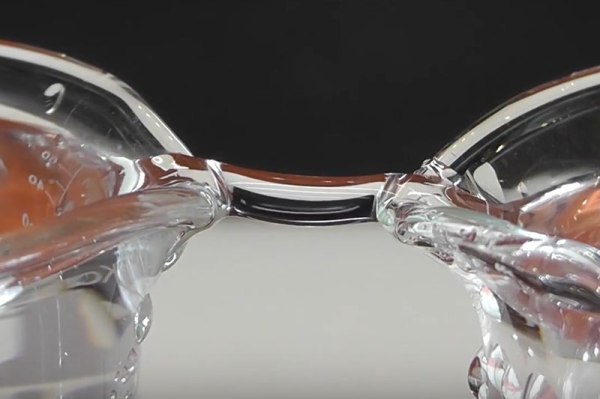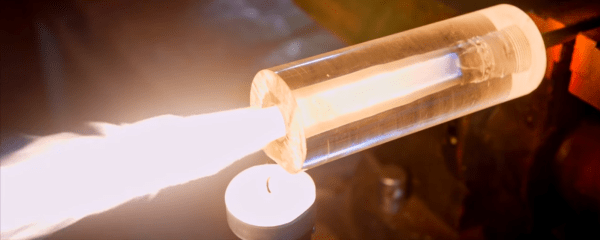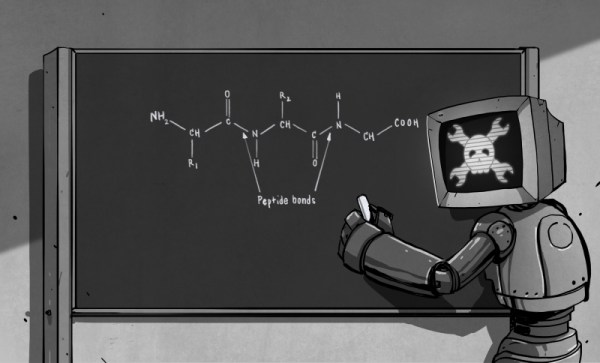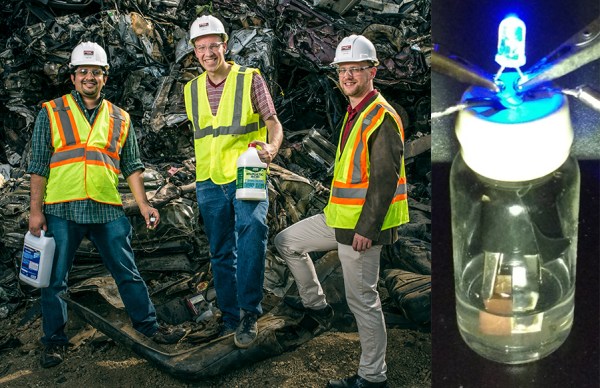It’s generally a bad idea to mix high voltage electricity and water, but interesting things happen if you do. This video from [RWGResearch] shows one of them: water bridging. If you have two water sources (such as two beakers full of very highly distilled water) with a high voltage between them, the voltage can create a gravity defying bridge that flows between them.
The experiment starts with the pouring spouts from two beakers nearly touching each other. Water fills the beakers right up to the spout, but it’s the application of electricity that pulls the bridge between the positive and negative beakers. With care, this technique can create a bridge of up to 2cm (about 0.8 inches). [RWGResearch] shows that he is able to create a bridge of about a centimeter with a 5KV voltage, but which only carries a few milliamps.
What forces are at play here isn’t exactly clear, but one recent paper speculates that it’s down to a combination of the dielectric force caused by the differing charges of parts of water molecules and the surface tension of the water. Whatever it is, it is fascinating and makes for a neat trick.
Want to make your own contribution to the scientific body of knowledge? Prove or disprove the speculation mentioned in the Wikipeadia article: is this possible because of an H3O2 lattice formed by the high voltage? How would you formulate a test for this?

















